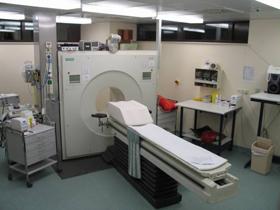
August 24, 2010 - In a recent study presented at the American Association of Physicists in Medicine (AAPM) 52nd Annual Meeting, researchers at the University of Washington showed that 18FDG dose for Positron Emission Mammography (PEM) may be reduced by as much as 70 percent without altering image quality.
PEM scanners show the location as well as the metabolic phase of a lesion. The metabolic view assists physicians to make the optimal cancer care decision by providing an unprecedented ability to distinguish between benign and malignant lesions, what researchers term specificity.
PEM is different from x-ray mammography in that it is currently not used as a screening modality. Rather, it is deployed to confirm extent of disease in a patient already diagnosed with a primary breast cancer.
"PEM is used in women with known breast cancer in order to plan treatment," said Wendie Berg, M.D., breast imaging radiologist, Lutherville, Md. "Radiation for treatment of breast cancer uses doses which are roughly 5,000 times higher than a diagnostic PEM study. Minimizing radiation dose is still important for any patient, and we can likely cut the dose of PEM in half, but the benefit to proper treatment exceeds the still low risk from the radiation dose of PEM."
Lawrence MacDonald, research assistant professor in the department of radiology at the University of Washington, and his team presented results of a study to detect lesions with very low doses of radiation using the Naviscan PEM scanner.
Preliminary results using phantom images suggest that PEM lesion detection can be reduced down to approximately 3 mCi injected dose of 18FDG or three to four times lower than the dose commonly used in clinical practice, while maintaining lesion detectability.
"Naviscan believes that the radiation dose to patients who undergo PEM can be cut at least in half, if not more, as suggested by the University of Washington study," said Judy Kalinyak, M.D., medical director, Naviscan Inc. "Our site in Japan is already injecting 5 mCi of FDG compared to the 10 mCi in the U.S., and a recently published abstract in The Journal of Nuclear Medicine further validates the reduction in dose down to 5 mCi."
Results from a recent presentation at the Society of Nuclear Medicine on findings from a National Institute of Health (NIH)-sponsored clinical study comparing PEM with breast magnetic resonance imaging (MRI) further demonstrate PEM's clinical appropriateness.
This multi-site study of hundreds of women with newly diagnosed breast cancer shows that PEM demonstrated a six percent improvement in specificity at comparably high sensitivity, and also recommended fewer unnecessary biopsies. These results are particularly significant for women who cannot tolerate an MRI exam and require an alternate imaging tool. The study is slated for publication in the December issue of the journal Radiology.
For more information: www.naviscan.com


 July 29, 2024
July 29, 2024 








